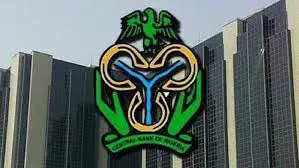In the first seven months of 2025 (7m’25), banks’ deposits with the Central Bank of Nigeria (CBN) through the Standing Deposit Facility (SDF) skyrocketed by 783.7% year-on-year to ₦79.8 trillion from ₦9.03 trillion in 7m’24, signaling significant excess liquidity in Nigeria’s banking system. The CBN’s shift to a single-tier remuneration structure for the SDF in 2024, paying an interest rate of the Monetary Policy Rate (MPR) minus 100 basis points (currently 26.5% with the MPR at 27.5%), has driven this surge, as banks parked excess funds at attractive rates. Quarter-on-quarter, SDF deposits rose 158.4% to ₦49.68 trillion in Q2’25 from ₦19.22 trillion in Q1’25, though July’s ₦10.9 trillion deposit fell 29.2% from June’s ₦15.4 trillion, per CBN data reported by Vanguard.
Conversely, banks’ borrowings through the CBN’s Standing Lending Facility (SLF), charged at 500 basis points above the MPR (32.5%), dropped 11.6% year-on-year to ₦66.47 trillion in 7m’25 from ₦75.19 trillion in 7m’24, reflecting liquidity constraints in the interbank money market. However, SLF borrowings surged 61% quarter-on-quarter to ₦50.46 trillion in Q2’25 from ₦9.38 trillion in Q1’25, though July’s ₦6.63 trillion marked a 245.3% decline from June’s ₦1.92 trillion, indicating volatile liquidity needs. The CBN’s aggressive liquidity mop-up through Open Market Operations (OMO) saw ₦11.53 trillion in treasury bills sold in 7m’25, a 75.2% increase from ₦6.58 trillion in 7m’24, contributing to a rise in interbank rates, with the Open Buy Back (OBB) rate climbing to 31.6% by July 2025 from 25.75% in July 2024.
This liquidity dynamics reflect the CBN’s tight monetary policy stance, unchanged since July 2024, when the MPR was held at 27.5%, per FocusEconomics (). Analysts at FBNQuest noted in March 2022 that similar liquidity surges from OMO maturities and bond coupons historically depressed treasury bill yields, a trend that persists despite higher rates in 2025 (,). The CBN’s March 2025 report highlighted liquidity pressures from SLF repayments, Cash Reserve Ratio debits, and OMO sales, exacerbating banks’ funding challenges (). X posts from @BusinessDayNG on July 30, 2025, noted public concern over high borrowing costs stifling credit access, underscoring the need for balanced liquidity management to stabilize Nigeria’s financial system

Leave a Reply